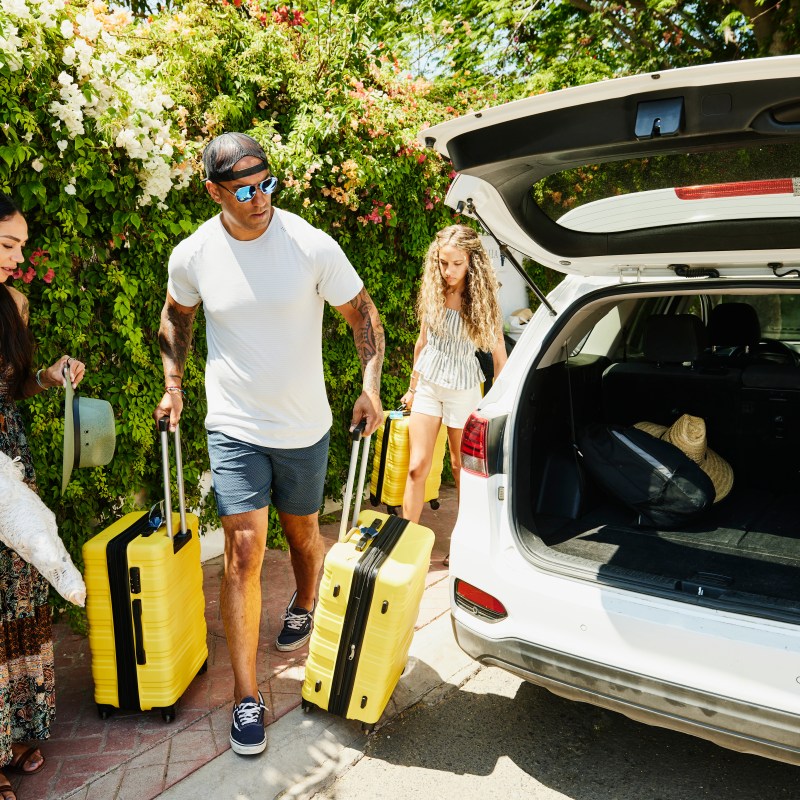
Who doesn’t love hitting the open road?
Videos by TravelAwaits
Americans drive more than just about any other country on the planet—so we’re more than comfortable behind the wheel.
Still, renting a car while traveling abroad is a big decision, and there’s plenty of fine print to consider.
There’s also the question of driver’s licenses, reading signs in other countries, and figuring out how to drive on the other side of the road, in some cases.
Also… what about all those unwritten road rules, like moving over when a car is on the shoulder and knowing when to flash headlights?
Let’s dig into the minutiae of renting cars abroad. Here’s what you need to know.
Renting cars abroad: the big questions
Do you need an International Driving Permit?
I’ve rented cars around Europe without an International Driving Permit, including in more rules-loving countries like Norway.
My partner had an IDP for a while, but it expired recently—and he was never actually prompted to demonstrate that he had an IDP when renting cars.
For context, we’ve rented cars and motos all over the world, from Poland to Australia to Vietnam to Spain.
So… do you need an IDP to rent a car? No.
That being said, I actually recommend having one. Sure, they’re great for renting cars, but they’re also United Nations-approved.
That means you’re joining an official and established global program, one that is recognized by 150 countries around the world and counting. Having an IDP signifies that you understand the rules of the road and have taken the necessary steps to verify your original driver’s license.
If you plan on renting cars abroad often—or on a whim, especially—then it’s helpful to have an IDP in your back pocket. That’s doubly true if you’re heading someplace with language barriers.
Your IDP license is a universal way to demonstrate your qualifications to be on the road.
How can you get an IDP?
You can apply for an International Driving Permit online. The process is usually quick and easy, costing between $20-$50, depending on who issues you the license.
The easiest way for Americans to get their IDP is via AAA, which lets you apply for one digitally.
Anyone over the age of 18 is eligible to apply for one. Just keep in mind that they only last for three years, meaning you need to re-apply for a new IDP once yours has lapsed.
What type of insurance should you target when renting cars abroad?
I’m a worry wart, so I always go for the most over-the-top insurance package I can find—and I haven’t once regretted it. That being said, you might be a little more comfortable exploring different packages.
Here are the most common when renting a car abroad:
- Collision damage covers any damage done to the rental car regardless of who caused the accident
- Liability policies cover any damage caused to other cars and passengers outside of your car
- Personal coverage includes policies designed to protect injuries to yourself and other passengers in your car, along with your personal belongings
What happens if you get ticketed abroad?
The most common tickets handed out to drivers abroad are speeding tickets.
An increasing number of countries and jurisdictions rely on speed traps, meaning you might not realize you were going over the limit until the rental company charges you.
I’ve been hit with these tickets a few times, which were resolved by paying a small fee. The rental company automatically charged me for these, as they received the tickets and fines.
If you’re pulled over for a more serious infraction, the authorities will collect your personal information and your car rental information. Depending on the severity, you might be handed a heftier fine or even have your right to the rental revoked.
Renting cars abroad: the fine print
Choosing a manual vs. automatic car
Unless you’re an expert manual driver, always opt for automatic.
Remember—the US has some of the widest and most forgiving roads in the world. You don’t want to be desperately pulling at the gear shifter while trying to maneuver on narrow streets… or on the opposite side of the road.
Always look into road size and driving conditions
There are places you probably don’t want to drive—for a variety of reasons (more on this below). Always make sure you look into road size and driving conditions before booking a rental.
You need to make sure your rental fits the roads you’ll be driving on. Also, are the roads really drivable? Or will you make your vacation stressful?
Get an informal guide on the rules of the road
Aside from knowing the formal rules—like which side of the road to be on—you should also have a good understanding of the rules of the road.
There are places where you might not want to drive based on the driving culture.
Every traveler has a different level of comfort on the road. Just make sure you’re not renting a car in an aggressive driving culture like Sicily unless you’re comfortable really claiming your space on a freeway.
Don’t bank on GPS working
If you’re heading someplace even slightly remote, I recommend having a backup plan in case you lose service. That’s doubly true in any place where you’re going to be working with a language barrier—and a cultural barrier.
Getting lost probably seems impossible thanks to modern technology, but it’s more common than you think.
